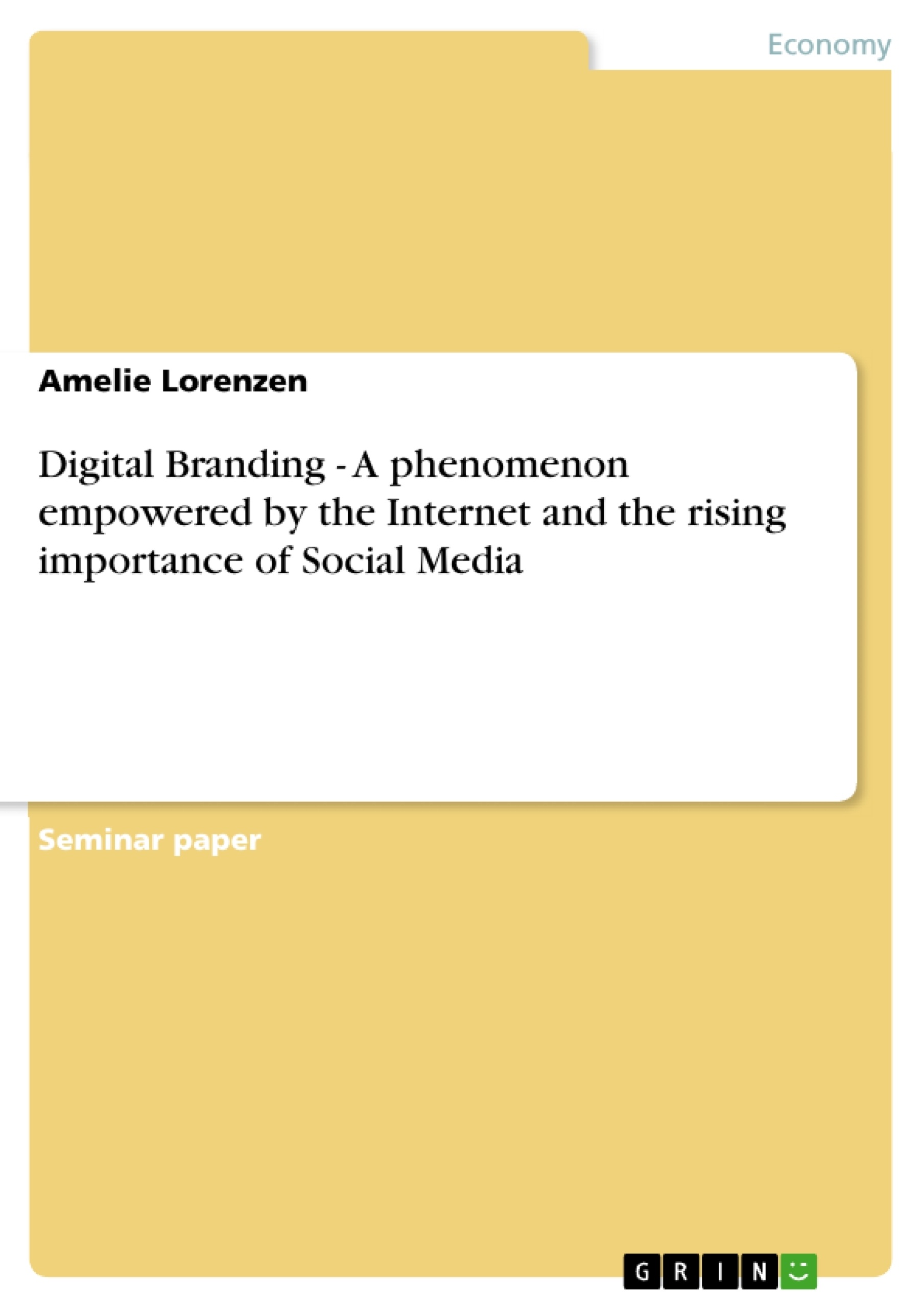The Internet has revolutionized the world in many ways. Recently, it seems that both people and organizations have gone all digital. This paper shall give an explanation of Reitkopf’s statement on marketing by investigating to what extent the Internet has affected the world of corporate branding and elaborating on advantages and pitfalls of this medium. Arguably, digital branding can be a highly valuable online marketing tool if, and only if, an organization wins the challenge to understand its customers, to successfully establish a positive customer-brand relationship, and to have a comparative advantage over its online competitors.
The structure of this paper his threefold. In the first part, it will derive implications of the Internet and social media on branding in general by elucidating advantages and disadvantages of the digital world. Secondly, the essay will focus on a specific aspect of the so-called I-branding (Simmons,2007), namely co-creation of brands. Lastly, a case study of the sports brand Nike will further clarify the meaning of I-branding and will provide examples for the advantages and disadvantages mentioned in the first part.
Inhaltsverzeichnis (Table of Contents)
- The Effect of the Internet and Social Media on Branding
- I-Branding
- Case Study: Nike
Zielsetzung und Themenschwerpunkte (Objectives and Key Themes)
This paper explores the impact of the internet and social media on corporate branding, focusing on the benefits and drawbacks of this digital environment for marketing efforts. It investigates the concept of I-branding, specifically its role in co-creating brands and building customer relationships. The paper examines how organizations can effectively leverage online tools and platforms to establish a strong brand presence, ultimately enhancing brand equity and fostering consumer loyalty.
- The Impact of the Internet and Social Media on Branding
- Advantages and Disadvantages of Digital Branding
- I-Branding and Co-Creation of Brands
- The Importance of Understanding and Engaging Customers
- Building Emotional Connections and Consumer Loyalty
Zusammenfassung der Kapitel (Chapter Summaries)
The first part of the paper examines the implications of the internet and social media on branding. It highlights the benefits of digital platforms, including increased reach, enhanced customer engagement, and the potential for viral marketing. However, the paper also discusses potential pitfalls, such as information overload, the risk of negative publicity, and the challenges of maintaining brand consistency across multiple channels.
The second section delves into I-branding and its role in brand co-creation. It emphasizes the importance of creating digital communities and engaging consumers in the development and promotion of brands. This section explores how brands can leverage online tools and platforms to foster customer interaction and build relationships that extend beyond traditional marketing strategies.
Schlüsselwörter (Keywords)
The key concepts explored in this paper include digital branding, I-branding, social media, brand equity, customer engagement, co-creation, online communities, viral marketing, brand personality, consumer loyalty, and brand consistency. These keywords represent the core themes and research foci of the paper, highlighting the transformative impact of digital technologies on branding practices and the evolving relationship between brands and consumers.
- Quote paper
- Amelie Lorenzen (Author), 2012, Digital Branding - A phenomenon empowered by the Internet and the rising importance of Social Media, Munich, GRIN Verlag, https://www.grin.com/document/207504



